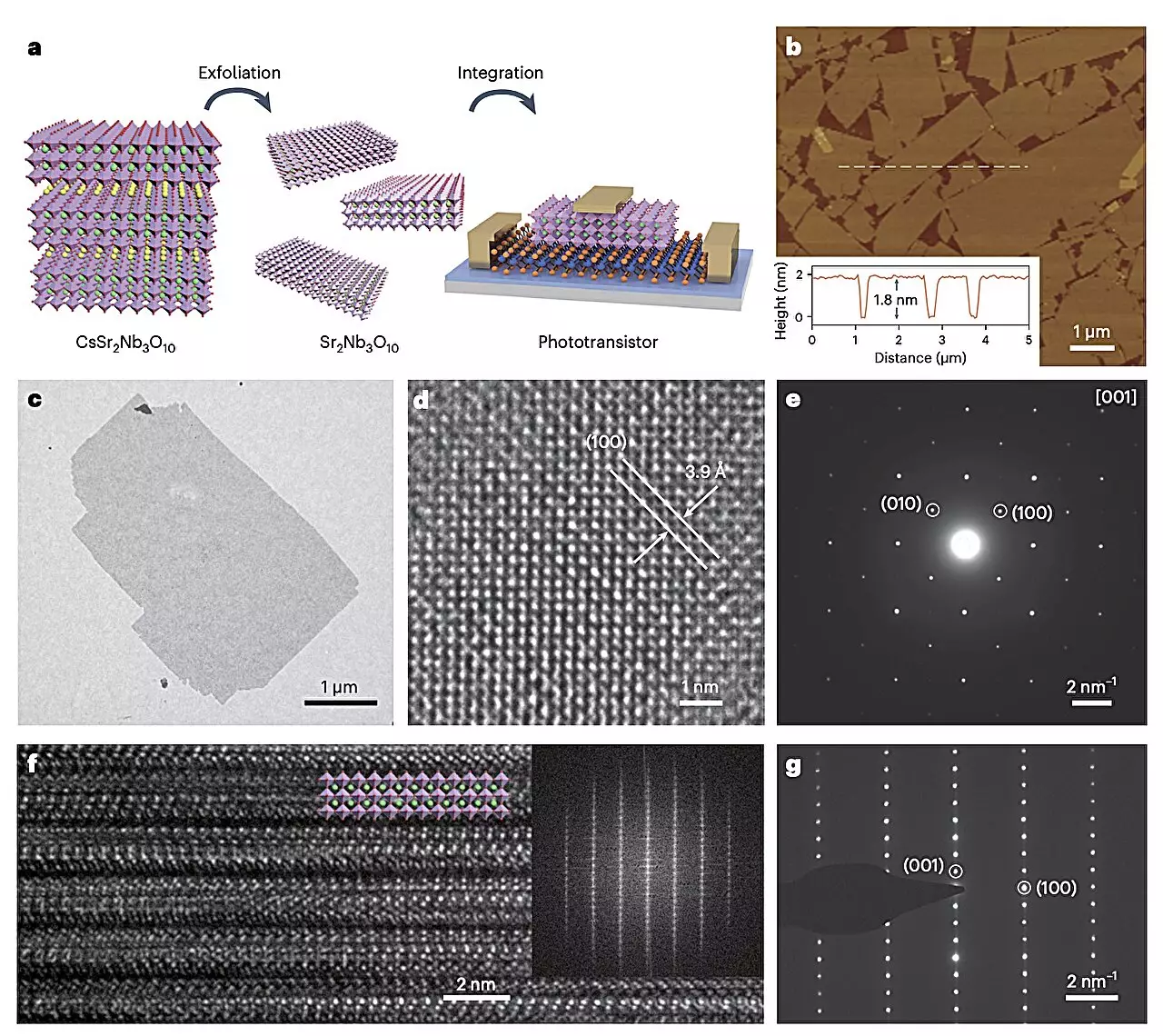In the realm of electronic devices, the development of smaller, more energy-efficient technologies is a constant goal. Two-dimensional (2D) superconducting materials have shown potential for achieving this objective in the realm of miniaturized optoelectronic devices. However, in order to function optimally while conserving energy, these smaller devices necessitate higher gate capacitance, which implies gates that can store more electrical charge relative to the applied voltage. One strategy to enhance gate capacitance without reducing the gate insulator or dielectric thickness involves using insulating materials with a high dielectric constant (κ), such as hafnium oxide (HfO2).
Challenges with Integration
While incorporating high-κ materials like hafnium oxide may offer benefits, it has proven challenging to integrate them with 2D semiconductors. This issue has been addressed by researchers at Fudan University who recently introduced a 2D perovskite oxide with a high-κ that can be seamlessly integrated with various 2D channel materials. Published in Nature Electronics, their groundbreaking study paves the way for future advancements in downsizing optoelectronic devices.
Synthesis of Sr2Nb3O10
The 2D perovskite oxide, Sr2Nb3O10, developed by the researchers, was created using a top-down synthesis approach. They successfully transferred SNO nanosheets onto different 2D materials, showcasing a high dielectric constant of 24.6 and a moderate bandgap. These distinctive properties make it an ideal photoactive high-κ dielectric for phototransistors based on a variety of 2D semiconducting materials, including graphene, molybdenum disulfide, tungsten disulfide, and tungsten diselenide.
To assess the potential of their synthesized 2D perovskite oxide for enhancing miniaturized optoelectronics, the researchers conducted tests by integrating it with various channel materials like molybdenum disulfide and tungsten disulfide. Their results were highly encouraging, with molybdenum disulfide transistors demonstrating an outstanding on/off ratio of 106 and a subthreshold swing of 88 mV/dec. On the other hand, tungsten disulfide phototransistors exhibited a photocurrent-to-dark-current ratio of ~106 and a UV responsivity of 5.5 × 103 A/W under visible or UV light, showcasing the efficient gate control and charge transfer capabilities of the photoactive gate dielectric.
The successful integration of the perovskite oxide with diverse channel materials through a straightforward process highlights the promise of this research. The researchers established a well-defined interface between the semiconductor and dielectric, leveraging the high-κ of Sr2Nb3O10 to enable effective gate control of channel materials. Additionally, the phototransistors developed with the photoactive dielectric offer UV-visible dual-band photodetection, distinguishing between UV and visible light at separate terminals.
The recent work conducted by Li, Liu, and their team has laid a solid foundation for the synthesis of additional 2D perovskite oxides that can be seamlessly integrated with existing semiconductors and channel materials. Collectively, these 2D perovskite oxides hold significant potential for revolutionizing the development of smaller, superior-performing, and energy-efficient electronics and optoelectronic devices in the near future.


Leave a Reply